Ubuntu Linux 20.10 'Groovy Gorilla' is here with renewed Raspberry Pi focus

There are many Linux-based desktop operating systems these days. Some of them are great, while others range from mediocre to downright bad and unnecessary. When a new version of a Linux distro comes out, the Linux community takes notice, but largely, the world doesn't pay it any mind. That is, of course, unless it is Ubuntu.
Yes, Canonical's Ubuntu is undoubtedly the most well-known desktop Linux-based operating system, and when a new version becomes available, it is a very big deal -- even in the mainstream. This is despite that there is no real surprise in each release announcement -- they come twice a year, in April and October.
Fedora 33 Beta Linux distro with GNOME 3.38 now available for PC and Raspberry Pi

Fedora 33 Beta was scheduled to be released during September, and on the eve of the final day of that month, the pre-release operating system is finally here! Yes, if you love Fedora and want to give an early version of 33 a try, today is your lucky day.
As you can imagine, Fedora 33 Beta comes with the excellent GNOME 3.38, which was only released a couple of weeks ago. The biggest change, however, is BTRFS being made the default filesystem -- ext4 is no longer the standard. Wow. Also significant? The new default editor is nano.
Linux in education: ViewSonic donates 300 Raspberry Pi devices to students

There is a lot of negativity in the world these days such as the COVID-19 pandemic, record unemployment, and the massive explosion in Beirut, Lebanon. Sometimes it can feel like positive news doesn't exist anymore. The truth is, good news is always happening, but it isn't always reported.
Well, today we are happy to report a feel-good story. Popular company Viewsonic, known for manufacturing high-quality computer displays, is donating 300 Raspberry Pi thin clients to the Los Angeles County Alliance for Boys and Girls Clubs. These little computers are a great tool for teaching kids about Linux.
8GB Raspberry Pi 4 now available
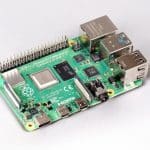
When the Raspberry Pi Foundation launched the Raspberry Pi 4 last year it described it as a "complete desktop computer", but the truth is it isn’t powerful enough to run many of the tasks you’d use a desktop computer for, even if you opted for the 4GB model.
Today however, the Raspberry Pi 4 gets an upgrade with a new 8GB version joining the ranks.
Play video game ROMs on Raspberry Pi 4 with Debian Linux-based RetroPie 4.6

Video games may be more popular than ever these days, but the truth is, they simply aren’t as fun as they used to be. Sadly, game developers focus too heavily on graphics and in-game purchases than actual gameplay. And so, in 2020, a true gamer is better served by playing video game ROMs from yesteryear, from systems like NES, SNES, Genesis, and N64.
Thankfully, there’s no shortage of ways to play classic video game ROMs nowadays. You can even use inexpensive hardware like the Raspberry Pi line of computers to easily get them onto your TV screen. If you have the latest such device, the Raspberry Pi 4, I have some great news — you can finally use the Linux-based RetroPie for your classic gaming fun.
Raspberry Pi gains a new 12.3-megapixel camera and interchangeable lenses

The Raspberry Pi can be used for all sorts of maker projects, and the foundation has offered camera modules for it since 2013, adding vision-related functionality.
The first module was a modest 5-megapixel affair that was eventually replaced by an 8-megapixel Sony sensor four years ago. Today, sees the arrival of a new much higher 12.3 megapixel quality camera, and a range of interchangeable lenses.
Give your Raspberry Pi a retro Windows makeover with Linux RaspbianXP Professional and Linux Raspbian95

For its size and price, the Raspberry Pi 4 is a pretty powerful computer. Sure, it’s not quite the complete desktop alternative the Raspberry Pi Foundation suggested it was at launch, but then it does only cost $35 and will handle most of what you can throw at it, provided you don’t set your sights too high.
If you’ve ever wished the Pi could run an older version of Windows, such as XP, or even Windows 95, then we’ve got some great news for you.
The Raspberry Pi-based server that could transform edge computing
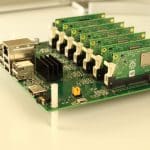
Cloud servers, you might think, are big expensive pieces of kit. But you’d be wrong, at least where the Turing Pi project is concerned.
This mini ITX format board costing under $200 allows seven Raspberry Pi systems to be combined into a desktop Kubernetes cluster that's smaller than a sheet of A4 paper.
Raspberry Pi 4 Linux computer gets twice the RAM and USB-C power fix
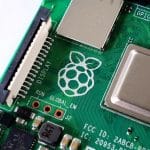
The Raspberry Pi line has provided great little Linux computers to nerds -- its low price and small size makes it ideal for tinkering and doing projects. But also, the device has proven to be a solid media device, wonderful for watching videos and emulating classic video games. In other words, it has been a very versatile computer, serving as many things to many people.
With the release of the Raspberry Pi 4, however, it finally became powerful enough to serve as a true desktop computer. By installing a Linux distribution, some people can use it for day-to-day computer use, such as web browsing, playing media, and word processing. Unfortunately, the $35 base model came with a paltry 1GB of RAM. Today, this changes, as the company has dropped the price of the 2GB version to $35, effectively doubling the memory for the base model.
New, fully working Ubuntu Linux images now available for Raspberry Pi
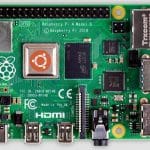
While most Raspberry Pi owners opt for Raspbian as their operating system, the tiny barebones board can run a number of other Linux distros, including Ubuntu.
There was a major problem with the previous Ubuntu images though -- a kernel bug prevented USB ports from working on the 4GB RAM model of the Raspberry Pi 4. A temporary workaround was proposed, but Canonical has finally fixed the flaw, and made updated 32 and 64-bit images of Ubuntu available for the Raspberry Pi 2, 3 and 4, which you can download now.
Using a high screen resolution on Raspberry Pi 4 can kill Wi-Fi

A strange bug has been discovered with the Raspberry Pi 4 which sees Wi-Fi failing when the screen resolution is set to 2560 x 1440.
Numerous users have taken to online forums -- including the official Raspberry Pi support forums – where various workarounds have been discussed. Of course, the simple solution to this problem is to use a lower resolution, but the root causes of it are still under investigation.
ICE-Tower brings extreme cooling to the Raspberry Pi
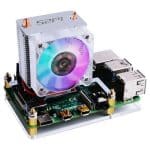
When the Raspberry Pi Foundation announced the Raspberry Pi 4, it described it as a complete desktop computer for (from) just $35. It turns out that claim was a bit of an exaggeration. While the new Pi is the most powerful yet, we’ve found it struggles to run a lot of the sort of software we’d want to use it with (most 3D games and video editing tools are a no-no).
Not only that, but if the Pi is working too hard, it gets very hot, very quickly, and reduces performance to protect itself because it doesn’t have a fan to cool it down.
Turn your Raspberry Pi into a PumpkinPi for Halloween
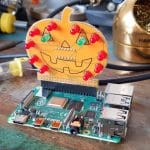
If you need some help getting into the Halloween spirit, and a Pumpkin Spice Latte from Starbucks isn’t quite cutting it, perhaps transforming your Raspberry Pi into an illuminated pumpkin will do the trick.
The Pi Hut has created a programmable Halloween board that you plug into your Pi. The Halloween PumpkinPi (see what they did there?) is available in two variations.
Canonical releases Ubuntu Linux 19.10 Eoan Ermine with GNOME 3.34, light theme, and Raspberry Pi 4 support

Thank God for Linux. No, seriously, regardless of your beliefs, you should be thankful that we have the Linux kernel to provide us with a free alternative to Windows 10. Lately, Microsoft's operating system has been plagued by buggy updates, causing some Windows users to lose faith in it. Hell, even Dona Sarkar -- the now-former leader of the Windows Insider program -- has been relieved of her duties and transitioned to a new role within the company (read into that what you will).
While these are indeed dark times for Windows, Linux remains that shining beacon of light. When Windows becomes unbearable, you can simply use Chrome OS, Android, Fedora, Manjaro, or some other Linux distribution. Today, following the beta period, one of the best and most popular Linux-based desktop operating systems reaches a major milestone -- you can now download Ubuntu 19.10! Code-named "Eoan Ermine" (yes, I know, it's a terrible name), the distro is better and faster then ever.
Keep your Raspberry Pi 4 cool with this brand new case with built-in fan
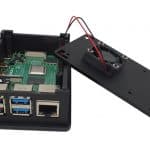
The Raspberry Pi Foundation announced a new version of its uncased credit card sized computer two months ago, claiming it to be powerful enough to be used as a complete desktop system.
While the Raspberry Pi 4 is easily the most capable iteration to date, the truth is you can’t really use it in place of a PC. I have the 4GB model, and it struggles massively whenever I try to do anything even slightly taxing. It also gets very hot.
Recent Headlines
Most Commented Stories
© 1998-2024 BetaNews, Inc. All Rights Reserved. Privacy Policy - Cookie Policy.